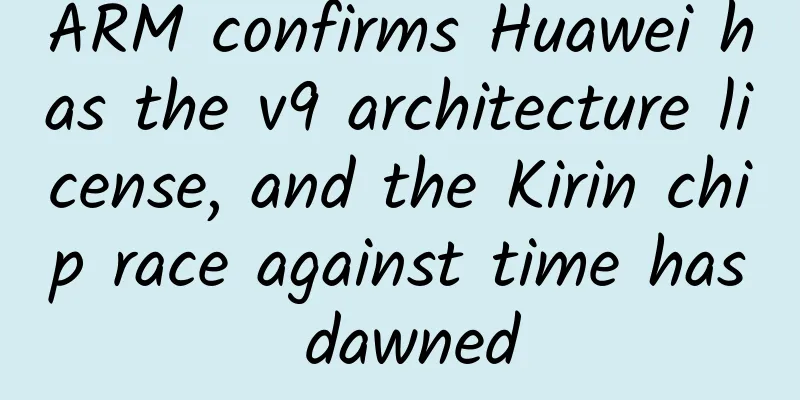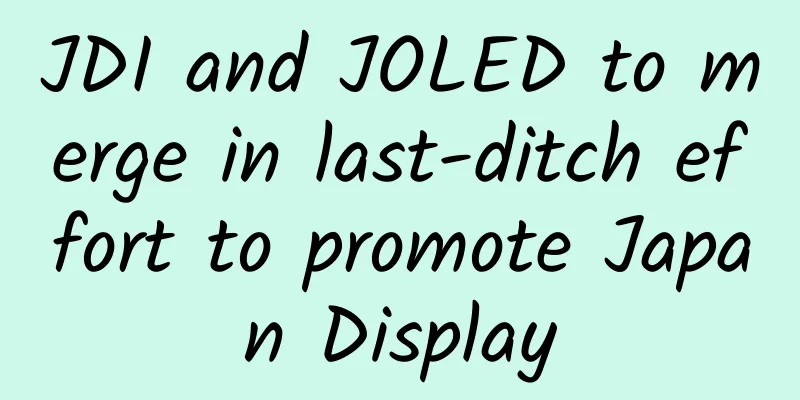ARM confirms Huawei has the v9 architecture license, and the Kirin chip race against time has dawned

|
ARM has released Armv9, an architecture that claims to bring the biggest technological change in 10 years. ARM said that if chip manufacturers use this architecture, the performance of the next two generations of chips will be improved by about 30% compared to the previous generation v8 architecture. For us Chinese, a more important information related to this is that ARM officially announced that the v9 architecture is not subject to the US Export Administration Regulations (EAR), and Huawei, which has a permanent license for the v8 architecture, can use this technology at the first time. There is no doubt that for Huawei, this news brings not only benefits about Kirin chips, but also a certain firm confidence in the future.What does obtaining the Armv9 architecture license mean for Huawei?To be clear, getting the Armv9 architecture license as soon as possible is the key to Huawei HiSilicon Kirin's high-end chips' survival in the future. Its broad significance has the following three aspects: 1. Stable chip design team For the chip design industry, if a company wants to maintain strong market competitiveness in the fast-growing industry, it can only continue to be exposed to new chip underlying architectures and continuously impact high-end chip design. However, after the United States announced sanctions on Huawei, many chip industry chain companies, including TSMC, were forced to Because ARM architecture has become the underlying foundation of chips used in mobile devices around the world, and even in Apple's new MacBook. It can be said that from hardware to operating system, most current mobile electronic devices are based on ARM architecture. If you do not use ARM architecture to design chips, you will be cut off from the market. In other words, if Huawei cannot continue to obtain the latest architecture license from ARM, it can only design chips based on the old architecture. If this is true, then we will really lag behind our competitors from the starting line. What's worse is that if Huawei's chip engineers cannot access the latest ARM architecture and their abilities are not improved, they may also have some thoughts that their skills are "useless". The loss of talent is tantamount to cutting off the source of funds for a technology company like Huawei. In the end, for some unknown reason, ARM officially announced that Huawei could obtain the v9 architecture license, which not only provided continued momentum for Huawei's chips, but also stabilized the morale of its troops. Based on past experience, one architecture is enough for chip companies in the market to survive for more than three years. Therefore, during this period, Huawei can get in touch with the latest chip architecture, so Huawei's chip design team can be said to have really stabilized. 2. Return to the high-end chip market at any timeHuawei's license for the v9 architecture is also a major boon for the future of Kirin chips, meaning that engineers can continue to advance chip design research. And after a research phase, companies such as TSMC can still tape out chips. Perhaps, after a few years, our SMIC will also have high-end production capabilities, which will fundamentally solve most of the current problems. A little-known fact is that although the United States prohibits TSMC from mass-producing chips for Huawei, engineering tape-out is still not a big problem. Therefore, as long as the v9 architecture license is in hand, Huawei HiSilicon will always have the competitiveness to compete in the high-end chip market in the next few years. Optimistically speaking, when the United States lifts the ban, Huawei can return to the high-end chip market at any time and will not be forced to completely withdraw from the industry. Even if it is true as Xiaomi executives said, Huawei has no chance of returning to the mainstream mobile phone market. However, in the future, AR/VR and other devices that require high processor computing performance will also give Kirin a full market space. 3. Force the United States to lift sanctions Why did the United States impose sanctions on Huawei? The reason is simple: Huawei's Kirin chips are too powerful, and the performance and functions have been improved at an absurd rate in recent years. From the first mobile chip Therefore, the United States wants to sanction Huawei and cannot allow Kirin chips to continue to develop at such a high speed. However, the news that ARM officially announced that it could license the Armv9 architecture to Huawei provided an opportunity for the United States to lift sanctions. As long as Kirin still has the ability to design high-end chips for a long time in the future, the only technical restrictions the United States can impose are lithography machines, which is completely contrary to the United States' desire to suppress Huawei. The United States hopes that Huawei will completely lose its high-end chip design capabilities, but now Huawei has not lost it, it just cannot produce it. Therefore, the effect of US sanctions will become less and less obvious in the future, or even meaningless, because sanctions themselves are a huge consumption of killing one thousand enemies and losing eight hundred of their own, which the US itself is unwilling to bear. Therefore, in this sense, as long as we maintain enough energy in high-end chip design, it is not impossible to force the US to lift sanctions. Think about large aircraft and high-end engines. Once we have them ourselves, what can they use to sanction us? What else can Kirin chips do in the future?After the road to high-end chip design has been reopened, what can the Kirin chip do now? Is it still unable to do anything? Of course not. Kirin chips can still "do a lot" at present, especially in the current popular field of smart cars. With Huawei's years of accumulated manufacturing experience, this will be the market where Kirin chips will reach the next peak. Although the three small giants of domestic smart cars and the American giant Tesla have a very loud voice, their sales are still pitifully small compared to traditional car manufacturers. However, the intelligentization and electrification of automobiles is a major trend. Not long ago, Xiaomi announced its official entry into the intelligent automobile industry. There are also reports that Apple has been secretly developing Apple Car internally. At present, most traditional automobile manufacturers are also launching new energy vehicles. However, compared with these Internet-started companies, traditional car manufacturers are at a great disadvantage in terms of the outstanding feature of smart cars - "intelligence", that is, the car-machine system. The car-machine systems of many traditional companies are basically still in the Stone Age. This shows that traditional car manufacturers may not be able to handle the car computer system alone, and they have to rely on third-party companies to empower it. Huawei has seen this vast market for car computer systems. Huawei has previously stated that it will empower traditional car manufacturers and help them build smart cars. This is by no means Huawei exaggerating. Although Huawei's mobile phone operating system EMUI is based on the Android operating system, the underlying compiler of the system and other systems have been completely replaced by its own technology. It is no exaggeration to say that the old Android foundation has been completely replaced. Huawei can do everything from underlying hardware design to user interaction, and the AI performance of the Kirin chip can provide extremely strong computing power for autonomous driving, allowing traditional manufacturers' autonomous driving capabilities to reach world-class levels more quickly. Compared with smartphones, a very prominent feature of smart cars is that their performance requirements are far less than those of mobile phones, because apart from autonomous driving, other data display and leisure and entertainment functions are quite basic. Currently, the application with the highest performance requirements for smart cars, apart from autonomous driving, is playing games such as fruit cutting, which was the level of smartphones many years ago. Huawei's current chip foundry partner, SMIC, can manufacture 28nm chips for it. Although this is a big gap from the 5nm and 3nm commonly seen in current smartphones, the current requirement for chips in smart cars is also 28nm, so Huawei's Kirin chips are not considered backward in the field of car computers. The car machine market is undoubtedly the best choice for Huawei's Kirin chips. The market is vast and the competition is small. Huawei's entry is a dimensionality reduction attack, which can quickly establish market advantages and form a moat of economies of scale through joint layout. All in all, the current situation of Kirin chips has improved. Not only does it have the ability to design high-end chips, but it also has a vast blank market for it to display its capabilities. Kirin chip, the future is promising! As a winner of Toutiao's Qingyun Plan and Baijiahao's Bai+ Plan, the 2019 Baidu Digital Author of the Year, the Baijiahao's Most Popular Author in the Technology Field, the 2019 Sogou Technology and Culture Author, and the 2021 Baijiahao Quarterly Influential Creator, he has won many awards, including the 2013 Sohu Best Industry Media Person, the 2015 China New Media Entrepreneurship Competition Beijing Third Place, the 2015 Guangmang Experience Award, the 2015 China New Media Entrepreneurship Competition Finals Third Place, and the 2018 Baidu Dynamic Annual Powerful Celebrity. |
<<: Hold your breath and count “8” to judge your lung capacity?
Recommend
Sad! The first person to study giant pandas in China has passed away...
Evening of February 16 Professor Hu Jinchu, known...
Google has come up with a solution to the parking problem that has been complaining for years
Recently, Google added a new feature to Google Ma...
Who to learn "Da Mi Kuai Xue Reading"
Resource introduction of "Dami Quick Reading&...
Using special chocolate as material! He spent 9 years making edible 3D printing
"3D printing is something you can never fini...
Mercury thermometers are about to be discontinued. What will be more reliable for measuring body temperature in the future?
Review expert: Wu Xinsheng, deputy chief physicia...
Why should we practice Code Kata?
[[155877]] background The concept of Code Kata wa...
"Wild Robots" is a hit! How can maternal love break through the "prison" of programming?
Learn the Way Using psychology to improve learnin...
How about Pampers diapers: How does Chengdu SEO optimization use external links to attract traffic?
Many webmasters encounter this problem: the SEO o...
New media planning event promotion and operation tool library!
Marketing operations are inseparable from activit...
10 programming habits that are harmful to your development projects
Avoiding these common coding habits will make our...
GMGC2016 Shengji Network will be the diamond sponsor to support the 5th Global Mobile Game Conference
The fifth Global Mobile Game Conference GMGC2016, ...
Why do I advise you to lose weight in winter? Because the effect is so good
As soon as winter comes, men, women, old and youn...
Douyin Operation: An experience of cold-starting and maintaining Douyin accounts!
In mid-2017, we entered the Douyin platform to te...
How much does it cost to develop a moving app in Yanling County? Yanling County moving small program development price inquiry
Yanling County moving small program development p...









